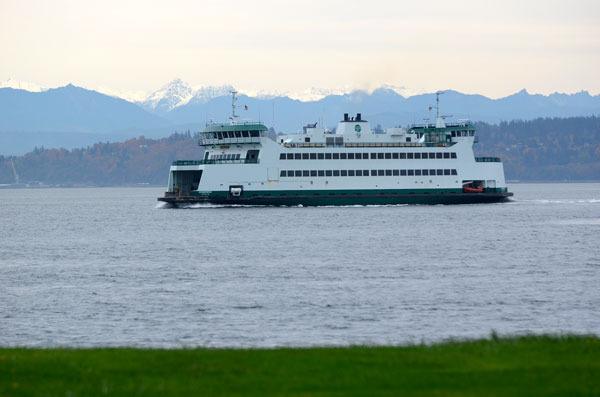South Whidbey’s quest to get another 144-car ferry in Clinton may soon be at an end.
Washington State Ferries leaders are scheduled to meet internally to discuss the fate of the Suquamish over the next couple of weeks. And while there’s no guarantee, a decision could be made and announced as soon as early November.
“There’s going to be movement, that’s my gut,” said Ian Sterling, an agency spokesman.
He also repeated earlier optimism that the Clinton-to-Mukilteo route is in a good position to get the new ferry, that the run is at the top of a long list. Sterling said “every single route wants the boat” but the South End’s community lobbying efforts and especially recognized problems on the run are factors that will play heavily in the decision making process.
“I think you guys have a pretty good shot at it, that’s my personal opinion,” he said.
The Suquamish is the last of four Olympic class ferries being built by the state. The $122 million boat is currently under construction and scheduled for completion in late 2018, but its homeport remains undecided.
In September, the Clinton Community Council officially requested the vessel come to the South End and join its sister ship and the first of the Olympic boats built, the Tokitae. The effort followed a summer that residents widely criticized as one of the worst in memory for long ferry lines.
The council’s request sparked a slew of similar lobbying efforts on South Whidbey; two chambers of commerce, the Island Transportation Planning Organization and Langley have also put in requests for the boat. The effort culminated earlier this month when Sen. Barbara Bailey, R-Oak Harbor, announced she had also officially requested the Suquamish. Bailey asked that plans for overhead passenger loading at the Clinton terminal be expedited as well, and that studies be performed to identify and mitigate any road blocks to the project.
In a recent interview with The Record, Bailey said the Legislature can exert “pressure” on ferry leaders but said that continued public advocacy is vital.
“It really is important for everybody to be singing from the same sheet of music,” Bailey said.
Dave Hoogerwerf, the longtime chairman of the Clinton Advisory Committee and one of those who spearheaded the effort to unify South Whidbey in requesting the new ferry, said Sterling’s comments were encouraging but not surprising. The route shuttles more cars than any other run in the system and remains a vital transportation link.
“I think the latest catastrophe with the Kittitas just proves that,” he said. “Even small changes on our run can make a huge difference in the level of service.”
The Kittitas, a 124-car ferry that serves on the run with the Tokitae, was pulled off the route earlier this week to address the loss of two other ferries in the system. It was replaced by the Kennewick, a new but smaller 64-car ferry. The switch has resulted in two-hour plus waits for motorists throughout the week.
Sterling said the agency hopes to have the route operating at full capacity again by the end of the weekend.
Mismatched boat sizes is one of the big problems with the run. The arrival of the Tokitae brought increased capacity but the price tag was late sailings; it takes longer to load the boat and it’s sometimes forced to leave before its full to make way for the other, smaller ferry. Agency officials are well aware of the problem and say the Suquamish is a solution. But, it could also create other headaches.
“You gotta watch what you wish for,” Sterling said.
Two boats that take longer to load could force a schedule change, which would require a large community discussion, he said. Ferries currently leave every half hour.
Hoogerwerf said a schedule change is unacceptable, that increasing the times between sailings would actually reduce capacity on the run and undermine the whole purpose of adding another larger ferry to the route.
“Changing the schedule doesn’t work,” he said. “It’s counter-productive to what we want to do and that’s move more cars across the Sound.”
Hoogerwerf said the solution is to identify efficiencies on the route, such as speeding up the boats and budgeting for subsequent fuel increases.



